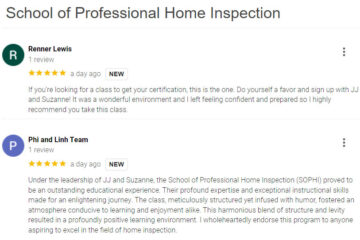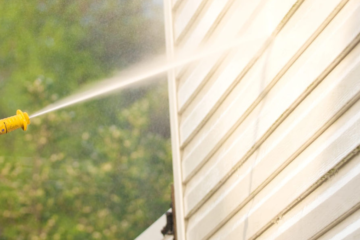The state guidelines are the key to understanding Home Inspection Exam. Insulation and ventilation problems are the cause of many problems in the home, therefore there is an emphasis on that topic. (it is worth 6% of the test)
We cover these items in detail in the Home Inspection Fundamentals course.
From Washington State Home Inspector Handbook;
Identify and inspect insulation, moisture management systems, and attic/interior/crawl space ventilation systems in conditioned and unconditioned spaces using applicable standards for material selection and installation procedures to assess immediate condition and long-term safety and maintenance issues that may affect people or the performance of the building.
a.) Thermal Insulation
1. Common thermal insulation types, materials, applications, installation methods, and construction techniques
2. Typical defects (e.g., lack of insulation, uneven insulation, damaged insulation, flame spread concerns, improper clearances and alignment)
3. Theory of heat transfer and energy conservation
4. Performance parameters (e.g., R-value)
5. Maintenance concerns and procedures
6. Safety issues, applicable standards, & appropriate terminology
b.) Moisture Management
1. Common vapor retarder types, materials, applications, installation methods, and construction techniques
2. Typical defects (e.g., inadequate ventilation, evidence of condensation)
3. Theory of moisture generation and movement
4. Performance parameters
5. Vapor pressure and its effects
6. Theory of relative humidity
7. Effects of moisture on building components, occupants, and indoor air quality
8. Moisture control systems
9. Appearance or indications of excessive moisture and likely locations for condensation to occur
10. Maintenance concerns and procedures
11. Safety issues, applicable standards, & appropriate terminology
c.) Ventilation Systems of Attics, Crawl Spaces, and Roof Assemblies
1. Common types, materials, applications, installation methods and construction techniques
2. Typical ventilation defects and how they affect buildings and people
3. Theory of air movement in building assemblies (e.g., conditioned vs. unconditioned, draft stopping)
4. Theory of relative humidity
5. Interdependence of mechanical systems and ventilation systems
6. Appliance vent systems requirements (e.g., clothes dryers, range hoods, bathroom exhausts)
7. Screening, sizing, and location requirements for vent openings
8. Maintenance concerns and procedures
9. Safety issues, applicable standards, & appropriate terminology


0 Comments